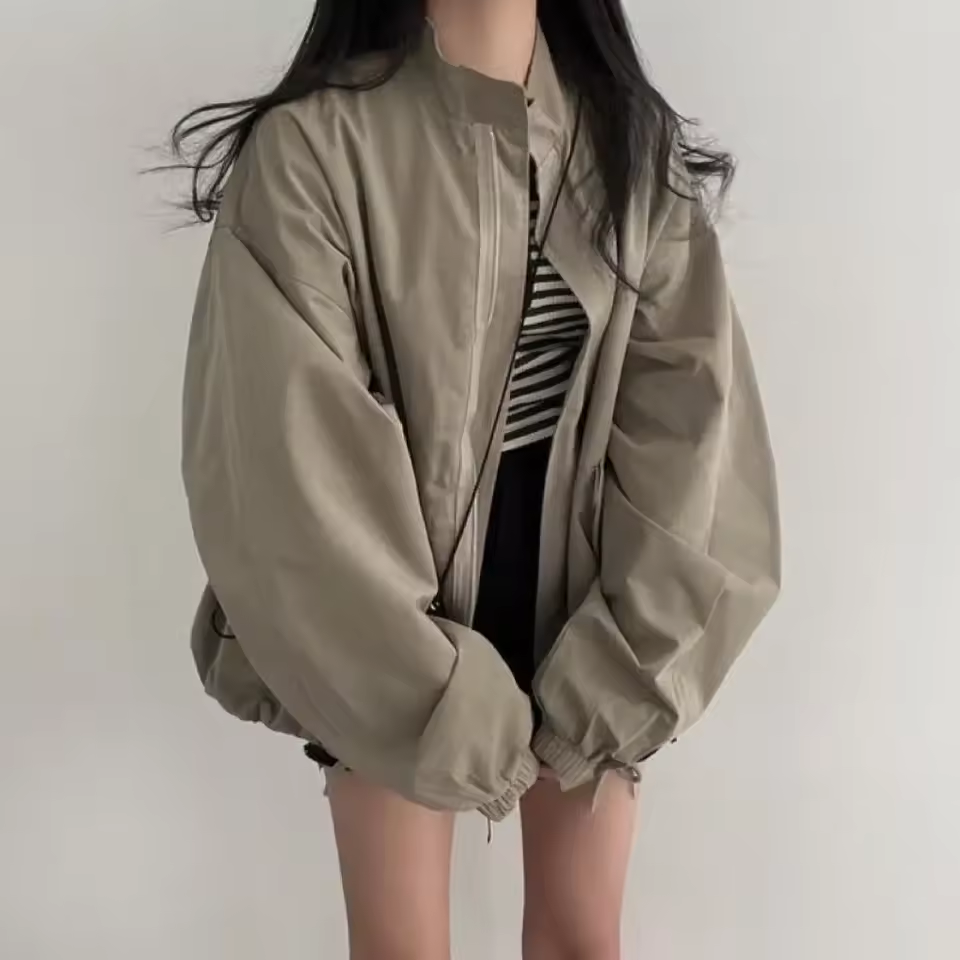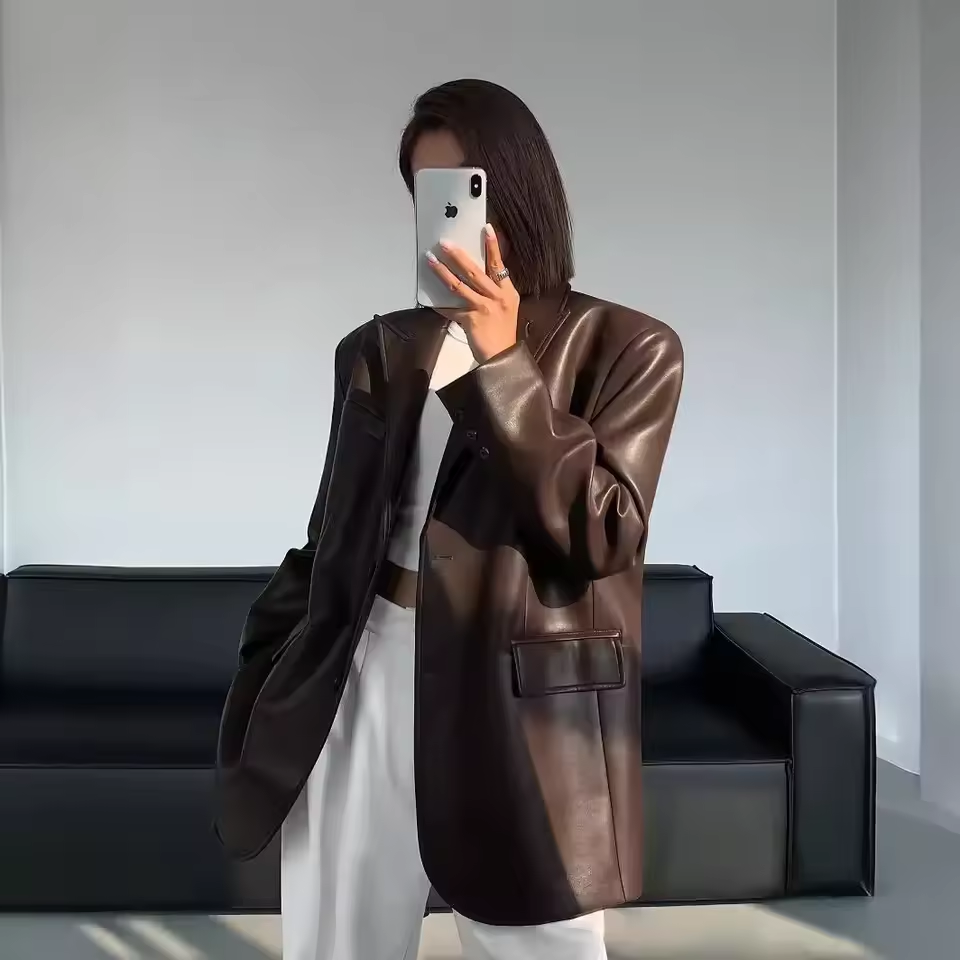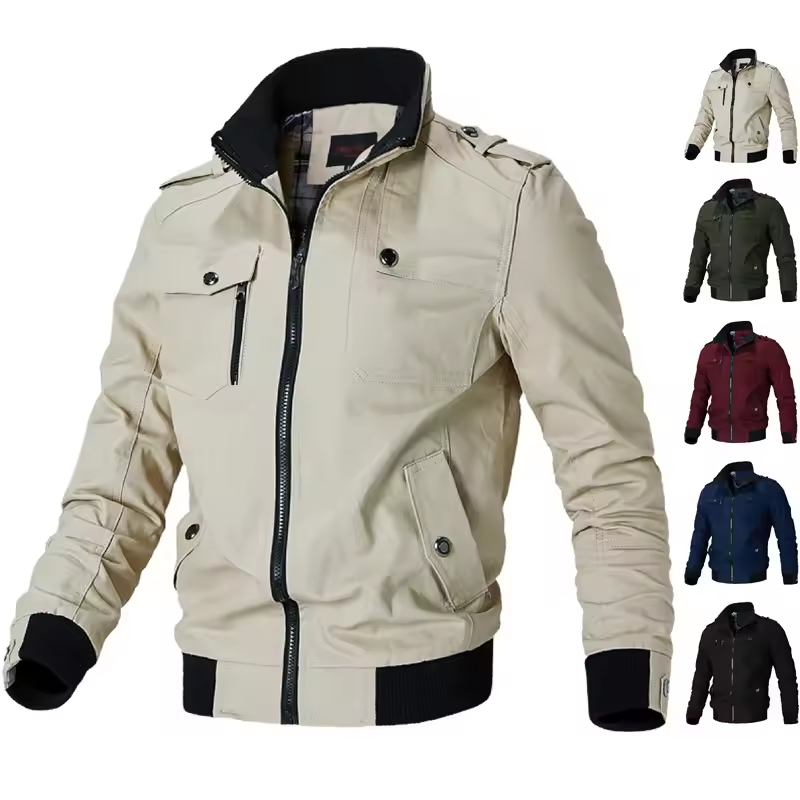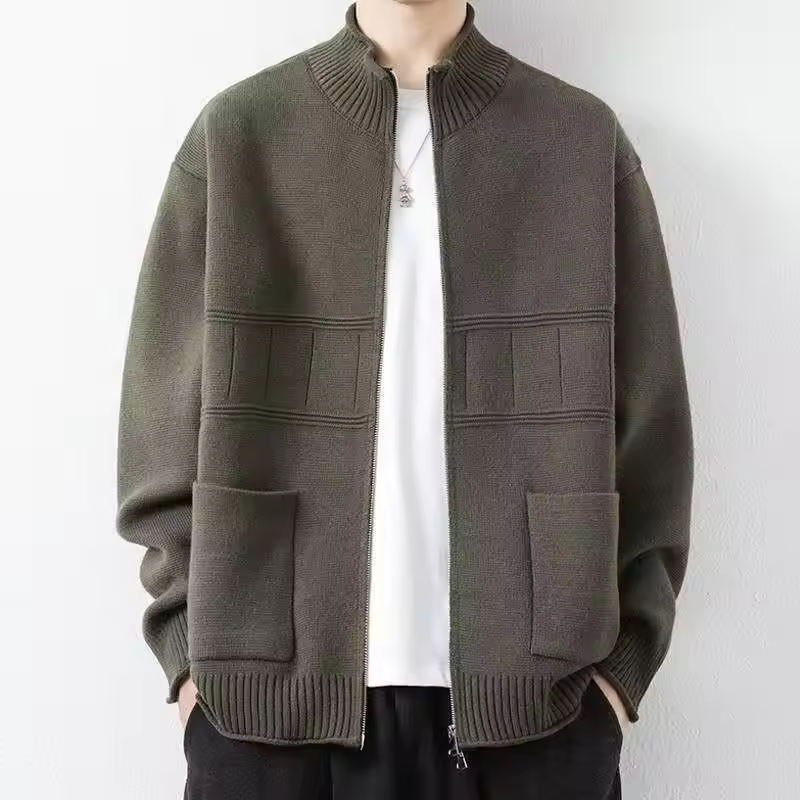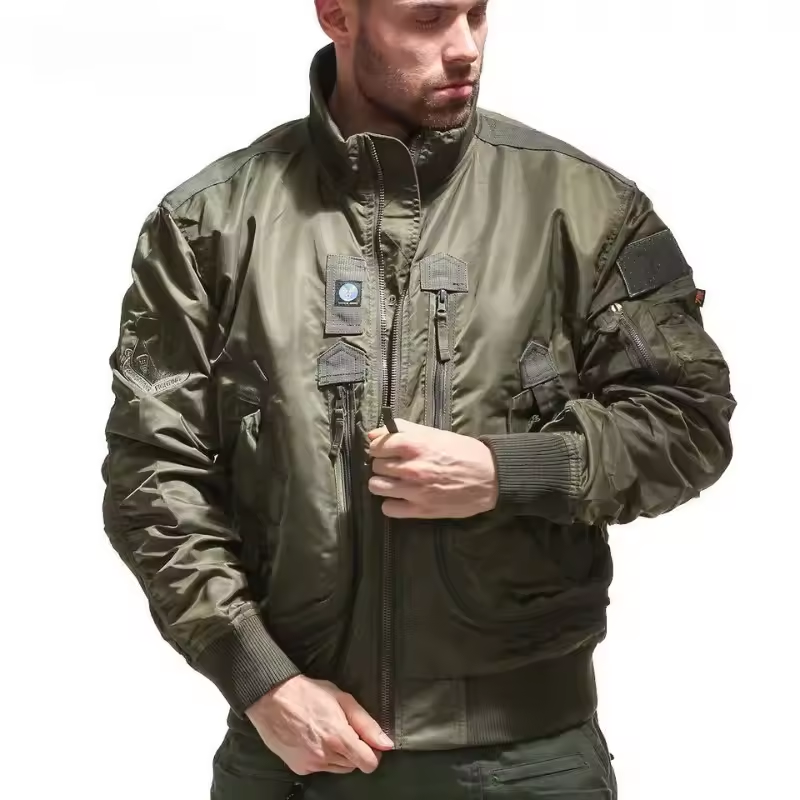Introduction to Jackets: The Versatile Outerwear Essential
Jackets are more than just a layer of protection against the weather—they’re a statement of personal style and practicality. Whether you’re shopping for a sleek blazer for a business meeting, a cozy winter coat for a snowy day, or a lightweight windbreaker for a hike, understanding the nuances of jackets can elevate your wardrobe. This article explores the key factors to consider when choosing a jacket, from material durability to seasonal suitability.
First, identify your primary purpose for the jacket. A commuter might prioritize waterproofing and breathability, while someone attending a formal event needs a tailored blazer. Next, consider the climate. A jacket designed for arctic temperatures won’t suffice in a mild autumn climate. Finally, think about style preferences. Do you lean toward minimalist designs or bold patterns? By aligning these elements, you can select a jacket that serves both function and fashion.
The Evolution of Jacket Design: From Utility to Fashion Statement
Jackets have undergone a profound transformation over centuries, evolving from purely functional garments into symbols of cultural identity, personal expression, and avant-garde design. Their journey reflects societal shifts, technological advancements, and the interplay between practicality and aesthetics.
Historical Context
The earliest jackets were designed for survival. In the 18th century, military trench coats, such as the iconic Burberry design, prioritized waterproofing and durability for battlefield conditions. Similarly, leather jackets emerged as utilitarian wear for motorcyclists and pilots, later gaining rebellious connotations through subcultures like rock ‘n’ roll and punk movements.
Cultural Symbolism
By the mid-20th century, jackets became cultural markers. The bomber jacket, popularized by U.S. pilots in WWII, symbolized freedom and ruggedness, while the pea coat, originally worn by sailors, transitioned into preppy collegiate style. The 1970s saw the rise of denim jackets as symbols of casual rebellion, immortalized in films like The Wild One.
Modern Innovations
Today, designers blend heritage with contemporary trends. For instance, men’s jackets now feature hybrid designs that merge traditional tailoring with modern comfort. A prime example is the “sport-chic” blazer, which incorporates stretch fabric and moisture-wicking linings for office-to-gym transitions. Meanwhile, women’s jackets increasingly embrace gender-neutral silhouettes, such as oversized parkas and tailored moto styles, challenging rigid gender norms.
Material Matters: Choosing the Right Fabric for Your Jacket
The choice of material determines a jacket’s performance, longevity, and suitability for specific climates or activities. Understanding fabric properties allows you to select a jacket that aligns with your lifestyle and values.
Natural Fibers
- Wool: A timeless choice for winter jackets, wool offers superior insulation and natural water resistance. Merino wool, prized for its softness and odor-resistant properties, is ideal for layering under heavier coats.
- Cashmere: Luxuriously soft and lightweight, cashmere jackets provide warmth without bulk. However, their delicate nature requires gentle care, such as hand-washing or dry cleaning.
- Cotton: Breathable and lightweight, cotton jackets (e.g., denim or chambray) excel in mild climates. Denim’s durability makes it a staple for casual styles, though frequent washing can cause fading.
Synthetic Fabrics
- Polyester: Known for its wrinkle resistance and affordability, polyester is often blended with natural fibers to enhance durability. For instance, polyester-cotton blends are common in blazers and windbreakers.
- Nylon: Lightweight and abrasion-resistant, nylon is a cornerstone of outdoor jackets. Brands like The North Face use it in waterproof shell layers for hiking and mountaineering.
- Recycled Materials: Eco-conscious buyers favor jackets made from recycled polyester or plastic bottles. These materials retain functionality while reducing environmental impact.
Innovative Composites
- Gore-Tex: A waterproof yet breathable membrane, Gore-Tex is critical for extreme weather jackets. Its layered design prevents moisture penetration while allowing sweat to escape.
- Thermore Eco-Down: A synthetic alternative to down feathers, Thermore uses recycled materials to mimic down’s insulation without ethical concerns.
Maintenance Tips
- Wool and cashmere jackets should be stored folded, not hung, to prevent stretching.
- Waterproof nylon shells require occasional reapplication of DWR (durable water repellent) coatings.
- Recycled materials often require similar care to their conventional counterparts, so always check care labels.
Seasonal Jacket Selection: Tailoring Your Choice to the Weather
Choosing the right jacket for the season is crucial. In winter, prioritize insulation and waterproofing. A winter jacket with a windproof shell and a high collar can protect against biting winds. For spring and autumn, opt for layered options like denim jackets or light anoraks that adapt to fluctuating temperatures.
In summer, focus on breathability. Lightweight linen or cotton jackets offer ventilation without sacrificing style. For year-round use, a versatile blazer can transition from office attire to evening outings with the right accessories.
Expert Tips on How to Style Jackets for Any Occasion
Mastering how to style jackets involves balancing proportions, colors, and textures. Below are actionable strategies to elevate your outfits across settings:
Casual to Semi-Formal
- Leather Jacket + Tailored Pants: Pair a sleek black leather jacket with tailored chinos and a tucked-in button-down for a sharp, edgy look. Add ankle boots for a grounded finish.
- Denim Jacket Over Sweaters: Layer a cropped denim jacket over a chunky-knit sweater and high-waisted jeans. Complete with knee-high boots for a cozy yet polished vibe.
Formal Events
- Double-Breasted Blazer: Opt for a navy or charcoal double-breasted blazer with peak lapels. Pair with slim-fit trousers, a crisp white shirt, and a silk pocket square for a timeless evening outfit.
- Trench Coat Redefined: A belted trench coat in beige or black can transition from day to night. Add a silk scarf, heeled boots, and metallic accessories for an upscale touch.
Outdoor Activities
- Puffer Jacket Layering: Wear a quilted puffer jacket over a thermal base layer and a long-sleeve turtleneck. Taper the look with slim-fit ski pants and insulated boots.
- Windbreaker for Hiking: Choose a lightweight windbreaker with multiple pockets. Pair with moisture-wicking leggings and a backpack for functional yet stylish trekking gear.
Color and Pattern Play
- Monochromatic Schemes: Stick to a single color palette (e.g., all-neutral tones) to elongate the silhouette. Add a belt or statement bag for contrast.
- Bold Prints: A plaid blazer or houndstooth coat works best when paired with solid-colored basics to avoid overwhelm.
Body Type Considerations
- Hourglass Figures: Opt for jackets with defined waistlines to accentuate curves. Avoid oversized styles that may disrupt proportions.
- Petite Frames: Choose cropped jackets or those with belt loops to create a balanced look.
The Rise of Sustainable Jackets: Ethical Choices for the Modern Buyer
Sustainability is reshaping the fashion industry, and jackets are no exception. Many brands now offer eco-friendly options using recycled materials or organic cotton. For instance, recycled polyester jackets reduce plastic waste, while hemp-based fabrics are biodegradable and durable.
When shopping for an eco-conscious jacket, look for certifications like Fair Trade or GOTS (Global Organic Textile Standard). Supporting brands that prioritize ethical labor practices and minimal environmental impact ensures your purchase aligns with broader values.
The Role of Technology in Modern Jacket Design
Advances in materials science and wearable tech are redefining jacket functionality and user experience. Innovations focus on enhancing comfort, sustainability, and adaptability to diverse environments.
Smart Fabrics
- Temperature-Regulating Materials: Some jackets use phase-change materials (PCMs) that absorb and release heat. For example, Under Armour’s HeatGear line incorporates such technology to keep wearers cool during workouts.
- Moisture Management: Fabrics like Coolmax wick sweat away from the skin, ideal for athletic jackets. These materials often feature antimicrobial treatments to reduce odors.
Weather-Resistant Innovations
- Self-Repairing Fabrics: Companies like Schoeller Textil are developing textiles with microfibers that mend small tears, extending jacket lifespans.
- Adaptive Insulation: Jackets like The North Face’s Thermoball use synthetic insulation that retains warmth even when damp, a game-changer for hikers in unpredictable climates.
Wearable Technology Integration
- Solar-Powered Jackets: Brands such as Vollebak have created jackets with embedded solar panels that charge devices via USB ports, appealing to tech-savvy adventurers.
- GPS Tracking: Some outdoor jackets now feature RFID chips or GPS modules for safety in remote areas, popular among hikers and skiers.
Sustainability-Driven Tech
- Carbon-Negative Materials: Patagonia’s Worn Wear initiative encourages recycling, while their Yulex wetsuits use algae-based neoprene to reduce carbon footprints.
- 3D Knitting: Adidas’ Primeknit technology reduces waste by knitting garments to precise measurements, minimizing excess fabric.
Elevate Your Wardrobe with the Perfect Jacket
A well-chosen jacket is an investment in versatility and style. By considering materials, seasons, and personal preferences, you can curate a collection that adapts to any situation. Whether you’re prioritizing sustainability, performance, or aesthetics, the right jacket becomes a timeless companion.
Remember, the key to success lies in balance—pairing practicality with personal flair. Explore different styles, experiment with layering, and don’t hesitate to consult professional stylists for tailored advice. Your ideal jacket is out there—now go find it!
